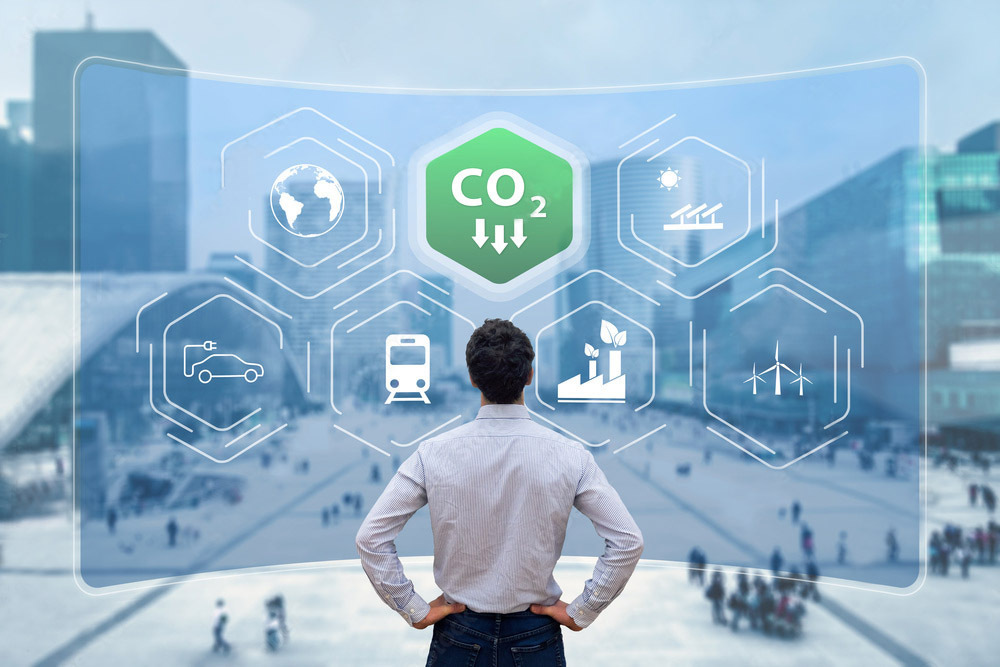Global Emissions
Without a doubt, the threat of climate change is already here. During the past 150-200 years, CO2 (carbon dioxide) concentration in the atmosphere has significantly increased. It is clear these dramatic climate changes are attributed to GHG (greenhouse gas) emissions caused by human activity, such as the burning of fossil fuels for electricity, heat and transportation.
Scientists throughout the world agree that in order to limit the impacts of climate change, global GHG emissions must be reduced globally. Despite the international conferences and innovative technologies, the world is still far from implementation of a sustainable path.
CO2 emissions
Carbon dioxide emissions are released into the atmosphere in many ways. The problem arises when human activity upsets the balance in nature. Greenhouse gases such as carbon dioxide, methane, fluorinated gases and more absorb heat. The huge amount of CO2 emissions in the atmosphere today has become the main driver of global climate change, and we are experiencing the impacts.
If we look at global GHG emissions by sector, we see that energy is responsible for about 76%. This includes heat, electricity and transportation. The transport sector alone accounts for about 23% of total emissions including road transport, aviation; shipping, rail.
Let’s take another example. Food production is responsible for about 25% of global GHG emissions. In addition, food waste emissions are significant, making up about 25% of total food production. The global food system is quite vast and involves the manner in which food is produced, processed, packaged and distributed. Effective technological solutions are needed for processing and distribution, activities that also contribute emissions from the sector.
Worldwide statistics show global averages, however, the situation can be very different in individual countries. For example, in the USA the transport sector contributes higher emissions than the global average. In Brazil, the majority of emissions come from agriculture and land-use change.
I am happy to know that the USA changed the direction regarding environment goals. US President Biden has put the issue of climate change high on the national agenda. Shortly after his inauguration, America rejoined the Paris Agreement after several years of no official involvement. The return of the US to the international arena is a serious game-changer. It is worth noting that the US is the biggest emitter of fossil fuel CO2 emissions after China.
In April this year, President Biden hosted a Leaders Summit in which 40 world leaders convened to discuss the targets and measures necessary for tackling the climate crisis and meeting the demands of science. He announced his country’s 2030 greenhouse gas emissions reduction target, involving plans for every sector of the economy.

The situation today
The long-term goal of the Paris Agreement is to keep the increase in global average temperature to well below 2°C (above pre-industrial levels) and to pursue efforts to limit the increase to 1.5°C. Almost all governments of the world have ratified the agreement and have made commitments to reduce man-made GHG emissions. In order to reach the Paris Agreement target, global emissions will need to be dramatically reduced.
The International Energy Agency (IEA) issued a report assessing the direction energy demand and CO2 emissions are taking following the effects of COVID on the world economy. Projections carried out in April 2021 show a rebound of nearly 5% in global CO2 emissions this year, as the world recovers from 2020.
Is there any plan for the world and who is making it?
Here, we are addressing the challenge of global CO2 emissions reduction and how each sector must contribute to finding a solution.
The private sector is getting on board. We see many companies and corporations committing to integrating sustainability measures into their business plans and strategies. The logistics industry is no exception. It is clear that integrating environmentally sound practices into supply-chain management will increase transparency and reduce emissions. What is measured can be managed!
The 26th UNFCCC Conference of the Parties (COP26) will take place in the United Kingdom (UK) in November this year. As the Party hosting the annual Summit, the UK finds it especially important to take responsibility for promoting the Paris Agreement’s targets. Several “pre-COP” events are being planned in order to accelerate action. Step-change campaigns will focus on the energy transition (from fossil fuels to clean energy), clean road transport and nature (biodiversity).
The UK Transport Decarbonization Plan (2020) sets out clear policies to tackle transport emissions and includes ensuring that goods will be delivered through an integrated, efficient and sustainable delivery system.
These are the first steps, however, they are the steps leading to a fundamental change relevant for every country. We hope these actions will serve as great examples for other countries to follow.
As the world moves towards implementation of the Paris Agreement, it is clear that strong policy will be a catalyst for private sector ambition. I believe that only behavior change can help to reach better optimisation and efficiency that will support the environment sector.
I believe that transition to electric energy is stepping stone on the way to achieving net -zero freight emissions.




